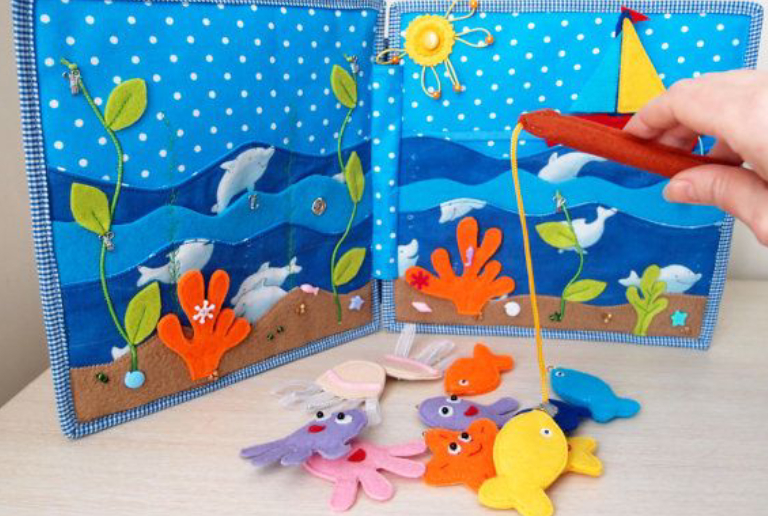
Time and again, we have been on the lookout for technology that could increase the harvest of produce in the minimum amount of time. From genetic modifications to cutting edge rearing tech, we have tried it all. Time tested proof is the use of traditional fishing gears and crafts to harvest fish. Making minor tweaks here and there in the design could make these future proof and potent for commercial purposes. Equipment that helps in fishing are divided into gears and crafts. Gears, on the one hand, are the tools that help in trapping the fish – such as nets, fishing poles and fishing lines. Crafts, on the other hand, are the vessels that carry fishermen along with their fishing gear out on fishing expeditions. Depending upon the nature of the fishes to be caught and the operating weather, the gear and craft and used varyingly.
Different Types Of Crafts For Fishing
Marine fishing crafts are used for fishing on the sea that surrounds the east and west coasts of India. The fishing gears and crafts used differ based on the currents and weather in the area of operation. For the eastern coast Catamaran, Tuticorin Boats (Fishing Luggers), Masula boat, Nauka and Dinghi are in use for fishing. Outrigger Canoes, Plank-Built Canoes, Dugout Canoes, Coracle, Shoe Dhonie and Built-Up boats are used for fishing on the western coast.
Canoe-shaped boats made of wood logs tied together by rubber are called Catamarans. They are half a metre wide, nearly a quarter metre in height and lengths between five to ten metres. These are put to service on the eastern coasts of India, from Kanyakumari to Orissa. The northeastern coast of Kerala also uses this economical, practical and oldest form of fishing craft. There are different designs of the catamaran depending on the indigenous designers who added a touch of their research and creativity while making them. The boat-Catamaran, Coromandal type, Orissa and Ganjam type and Andhra type are a few of the different catamaran types used across India. In general, these designs have sets of main logs and side logs tied together using rope or rubber. The side logs are shaped like that of a boat to provide ease of passage and strength through the waters.
Tuticorin boats are carved boats that are eleven metres long, two metres wide and a metre in height. They are used on the inshore waters owing to their low height for marine applications. They are flat and long and hence best suited for cargo transportation. Planks made of mango trees, held together by fibres from palm leaves are the Masula boats. These are weak floating crafts that are used in soft sailing conditions. This is not the case for Nauka and dinghi. They are considerably larger vessels of about eleven to thirteen metres in length, two to three metres in width and two metres in height.
In Kerala, different canoes are used for fishing such as dugout canoes and plank-built canoes. They are used from Kerala to Konkan coast in Karnataka, and their sizes range from five metres to as long as twenty-two metres. Large canoes of over fifteen metres of length, used along the Konkan Coast are the Outrigger Canoes. Built-up boats are highly specialized fishing vessels used along the Bombay and Ratnagiri coasts.
Know More About : 3 Top Fishing Rods Of 2020
Different Types Of Gears For Fishing
Equipment for baiting, trapping and reeling in fish are the fishing gears. The type and use of fishing gears and crafts vary from region to region and the fish to be caught. Nets are the go-to solution for a large scale fish harvest. The design and manufacture are done mainly by fishermen themselves in cottage industries. A variety of nets are used and are bag nets, fixed or drag nets, drift nets, cast nets, stationary nets, boat seine and shore seine.
Drag nets are used in deep-sea and underwater. They have small wings to support hovering in the water and are also called Danish seines. Drift nets are also called gill nets. They are kept in the water overnight and form a perimeter around the fish. In the morning, they are dragged trapping the fish inside. Nets placed at the beach, and hence called beach seine or haul seine. They have a floating and sinking part that helps in trapping the fish. Giant fishing nets are called seines. They are spread across the water with movement and catch fish along with the nets. These are mounted on wires and are held against the flow of current vertically. There are boat mounted or shore mounted seines.
Preventive And Routine Maintenance
The life of the fishing gears and crafts depend on the way they get treated after use. They may be used extensively or intensively, but the post usage care is very critical for the extensive reuse of the equipment and durability. Checking for damages, clogging, saltwater, weed and waste are essential to prevent decay or affect the operability of the tool. After every single use, gear should be thoroughly cleaned with fresh water to remove any salt, mud, weed or any other wastes. Use potassium permanganate solution or copper sulfate solution to dip the equipment and make it entirely germ-free. If both of the above are not available, common salt in freshwater as a solution is also a good alternative. Wash again with clean water and leave it in the shade to dry. For prolonged storage, keep away from moisture and sunlight to prevent germs from affecting the materials.




